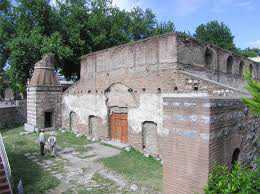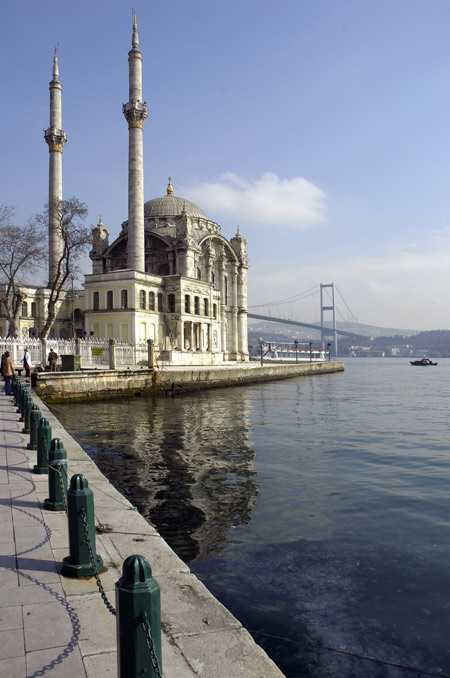TURKEY
Erdogan’s religious acrobatics: Nicaea council church back to being a mosque
by NAT da Polis
 The church of Aghia Sophia in Nicaea (Izmit), in which the 787 Council was held, was used as a museum. A controversial decision by the Directorate General of Religious Affairs transforms it into a Muslim place of worship. Erdogan’ contents Islamic sectors of society.
The church of Aghia Sophia in Nicaea (Izmit), in which the 787 Council was held, was used as a museum. A controversial decision by the Directorate General of Religious Affairs transforms it into a Muslim place of worship. Erdogan’ contents Islamic sectors of society.
Istanbul (AsiaNews) – The specter of Aghia Sophia continues to plague the Islamic world of Tayyip Erdogan’s Turkey. Not the most famous symbol of the church of Constantinople, but another church, Aghia Sophia in Nicaea (now Izmit), which predates the Constantinople church, having been built in the fourth century. It passed into history in 787 AD, when it was the last church to host a united Christendom drawn to discuss the iconoclastic question, in a truly ecumenical synod, before the fatal schism of 1024.
This Christian church, the Aghia Sophia in Nicaea (Izmit), was transformed into a mosque in 1331 by Orhan Gazi who led the Ottomans and which was later made a museum in 1920, has returned once again to being a mosque.
All that was needed was a directive from the Directorate General for Religious Affairs led by Mehmet Gormez, appointed by Erdogan instead of Ali Bardakoglu, the man behind the visit of Pope Benedict XVI to Turkey, since retired. The move has elicited several considerations in Turkey and abroad in a period in which much importance and emphasis is placed on religious freedom. It is also noted that this decision by the Directorate for Religious Affairs, made in accordance with the Directorate General of Religious Foundations, to which the church of Aghia Sophia in Izmit belongs, is in complete contrast with the decisions of the Ministry of Culture in Ankara, which granted permission for religious celebrations in Christian monuments that have since been transformed into museums.
The President of the Republic of Germany, Christian Wulf, in his recent visit to Turkey, made the request for permission for a mass to be celebrated at the Church of St. Paul in Tarsus, a request that was granted by the Turkish authorities . The same Patriarch Bartholomew I, 26 December 2000 celebrated a liturgy in the church of Aghia Sophia in Izmit on the anniversary of the second millennium of the birth of our Lord, as the church of Aghia Sophia in Izmit was counted, according to the Directive of the Ministry of Culture in Ankara, among those Christians monuments turned into museums.
Erdogan’s decision is puzzling, but also brings to light lurking divisions within Turkish society. In recent times, especially after the 2007 elections, Erdogan’s policy has been characterized by an opening towards non-Muslim religious minorities,. Thanks to these re-openings, religious communities have begun to breathe once again. In is enough to mention the recent decree that provides for the restitution of property illegally confiscated in the past, from the religious foundations, and the grant of permission to celebrate religious functions in Christian monuments that have since become museums. The most symbolic outcome was the celebration of the Mass officiated by Ecumenical Patriarch Bartholomew in 2010 in the historic Monastery of Our Lady of Sumela on the Black Sea, the first after 80 years.
These initiatives by Erdogan have never been welcomed by his Islamic-nationalist followers, who are not only present in Bahceli’s nationalist MHP party (which achieved about 14% in the last election), but they are also lurking in the ruling AKP party, under the wing of the Vice President Bulent Arinc, perhaps the most prominent politician in the Islamic conformist current within the ruling party. Arinc said during the inauguration the day before yesterday: “With this act we have regained the favor of our ancestors. The church of Aghia Sophia in Izmit is the result of conquest and as such, as it was used then, is right. A church can be transformed into a mosque. Both are places of prayer to God”. Bulent Arinc concluded, “How many mosques have been transformed into our churches?”.
There have however, been sstrong negative reactions within the Turkish intellectual world among which that of Professor. Selcuk Mulayim of Marmara University, who said that the church of Aghia Sophia in Izmit has played an important role in Christian history and as such should be considered as with the Hagia Sophia in Constantinople: a museum.
Istanbul’s comment diplomatic circles mummer that Erdogan, making a symbolic and instrumental use of the name of Aghia Sofia, has tried to satisfy certain sectors of his party, and not only. Consenting to the transformation of the church of Aghia Sophia in Nicaea (Izmit) into a mosque, he has calculated that certain “targeted” concessions will lengthen his stay in power.
via TURKEY Erdogan’s religious acrobatics: Nicaea council church back to being a mosque – Asia News.

